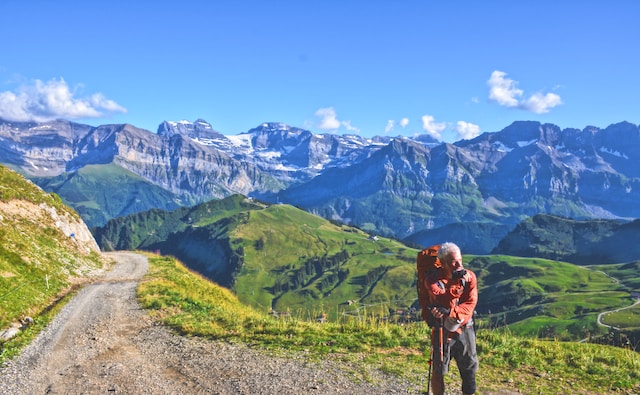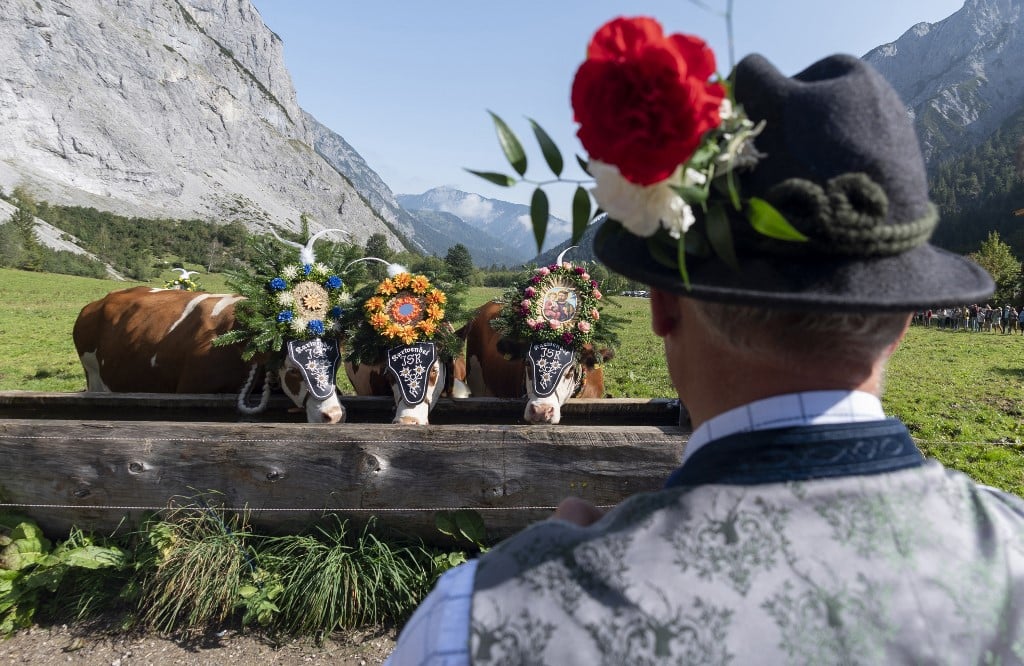What do you get if you cross a bicycle, a sled and skis? A velogemel, that’s what.
This contraption is the latest addition to the Federal Office of Culture (FOC) ‘List of living traditions in Switzerland’.
The list, which was started in 2012, includes traditions that have existed for several years – or even centuries in some cases – and are still practiced in Swiss regions today.
In October, the FOC announced that there were 29 new entries, meaning the list now has 228 significant items of cultural heritage on it.
Suggestions from the public were taken into account.
Among events already included are customs such as Alpine pasture season, cow fighting, yodelling, alphorn playing, and Basel Fasnacht.
READ ALSO: Seven Swiss ‘living traditions’ that may surprise you
Here’s a look at some of the newest additions to the list, which cantons they come from, and what they tell us about Switzerland.
Velogemel (BE)
First we’ll get back to this wooden snow bike thing. According to tourism bosses, the velogemel was invented by a man called Christian Bühlmann from Grindelwald in the Bernese Alps, who applied for a patent for the vehicle back in 1911. At that time he described it as a “single-track steerable sled”. It became the go-to vehicle for locals to swoosh around the Grindelward area in winter months.
Nowadays you can check out the Velogemel World Championships, which are held every year in February. But for those interested in trying it themselves, you can hire this ‘snow bicycle’ at Grindelwald railway station. Take the bus up to Bussalp, which lies around 1,800 metres above sea level, have a snack at the mountain restaurant, enjoy the views and ride the velogemel back down. Just be very careful – like a sledge, it has no brakes!
READ ALSO: Velogemel – the strange Swiss tradition you have to try
Hiking (nationwide)
While not an unusual activity in the slightest, the FOC said hiking was added to the list because it is an activity “practiced and maintained by broad sections of the population” in Switzerland.

This shows just how much hiking means to the Swiss.
Thanks to a stunning selection of nature spots, including gorgeous mountain views, lakes and breathtaking waterfalls, Switzerland is the perfect place to go hiking.
There are over 65,000 marked trails across the country, whether you’re looking to trek through a forest or in the Alps.
It’s a hobby the Swiss themselves take seriously; you’ll find that many people – whether by themselves, as a couple or in family or friend groups, take a day trip to hike outside the city regularly.
READ ALSO: How to keep safe when hiking in the Swiss Alps
Cowbell casting (BE, FR, NE, VS)
Cowbells (and cows) are synonymous with Switzerland. In fact, you’re likely to find kitsch versions of these bells in Swiss tourists shops among the chocolate and cheese souvenirs.
Farmers began using cowbells so they could find their cattle whatever the weather and time of day. Cowbells are also used nowadays in lots of festivities and sport events (and also some pop music).
Now the crafting of these sacred bells is being honoured in the living traditions list.
“The list also includes knowledge and skills that are practiced and passed on by smaller groups and communities,” said the FOC. “For example, the casting of cattle bells in the cantons of Bern, Fribourg, Neuchâtel and Valais.”
Making cowbells requires a great deal of skill. But you can also try this yourself, for instance at the Berger foundry in Bärau, Bern.
EXPLAINED: Why are cows so important in Switzerland?

Absinthe (NE)
Switzerland may at times shy away from its connection to the alcoholic drink absinthe, partly due to a grisly murder in the early 1900s that was linked to consuming the drink (you can read more about it here):
How Switzerland’s ‘absinthe murders’ saw the drink globally banned for a century
But it is now being included in the living traditions list – specifically the “production and social practices” around it.
Absinthe – also known as ‘the green fairy’ – was discovered in Switzerland’s Val-de-Travers, near the French border, in the mid-18th century.
It is made through distillation and contains the so-called “holy trinity” of artemisia absinthium (grand wormwood), anise and fennel seeds, while other aromatic plants can be added.
It became the drink of choice for bohemians and artists in Paris but scored a bad reputation over fears it caused hallucination and madness.
It was banned in Switzerland in 1910 and later in France, Germany and the USA. However, Swiss producers went underground and continued to make it in secret.
That was tricky because of the strong odours that arose during the distillation process. These smells were said to hang over the villages in the Val-de-Travers for almost a century, as producers hid the production in cellars.
One for the weekend!#DidYouKnow absinthe was banned in #Switzerland from 1910-2005? As a result people would hide bottles in the woods!
Even though the ban was lifted this tradition persists, so keep an eye out for a bottle if you're on a #Swiss hike!https://t.co/u2c6IND65d pic.twitter.com/4s2pzgcfB4
— Swiss Embassy UK (@SwissEmbassyUK) July 28, 2023
Absinthe was legalised in Switzerland in 2005 – and since then, it has become a cult product, and something the local region is now openly fiercely proud of.
“Several distillers and plant producers have come together in a trade association to promote and develop activities linked to absinthe,” said House of Switzerland, which is a publication from the Swiss Federal Department of Foreign Affairs.
There is also an Absinthe Museum in Môtiers that you can visit to get the complete lowdown on the history of the ‘green fairy’.
The mountain inns of Jura (BE)
These mountain inns or métairies in French are found in the Jura mountain region and are known for providing shelter and a simple but hearty and delicious meal or snack.
You can expect to find Swiss favourites such as rösti and fondue after (or mid) hike or bike ride. Guests are encouraged to sit round the large tables, have a chat with others and put their feet up for a while. Many also offer a bed for the night.
The innkeepers are known for having a slower pace of life and may run farm alongside the inn. You might even get the full Swiss experience and find they produce their own cheese.
You’re likely to find these inns open from spring to autumn, but some also take guests in during winter.


 Please whitelist us to continue reading.
Please whitelist us to continue reading.
Member comments